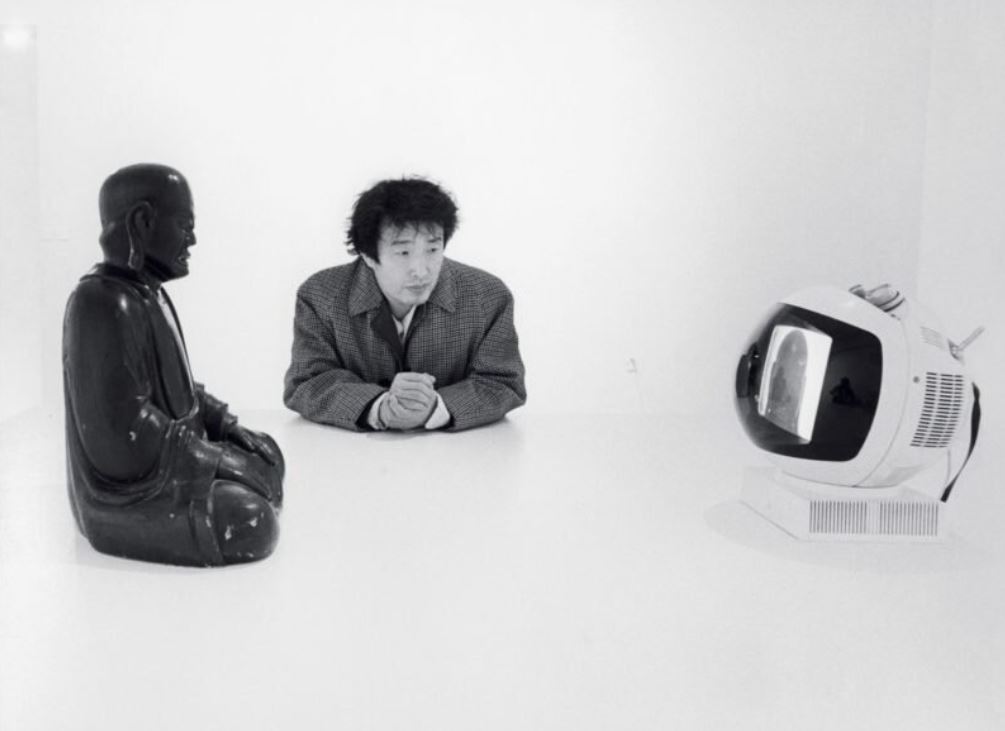Lev Manovich explores eight propositions for what New Media is in his essay New Media from Borges to HTML
(The New Media Reader, Noah Wardrip-Fruin and Nick Montfort, eds. The MIT Press: Cambridge, Mass, 2003). One of these critical ways to analyze New Media art and visual culture is suggestion 5: New Media as the Aesthetics that Accompanies the Early Stage of Every New Modern Media and Communication Technology
(19).
Every media - from paint to printing to digital technology - was new once, and as history shows, similar questions and concerns appear every time such new media are introduced. Regardless of whether New Media specifically is unique in its effects on the global world or if it's just one of the ever evolving media, these echoed concepts and questions are a key feature of artists critically engaging with New Media technologies.
Nam June Paik was one such artist that is well known for critical exploration of emerging technologies and their role in and the effect on humans and communities. His work TV Buddha (1974) is a response to a too rapidly
progressing adoption of television technologies: Nam June Paik's concerns mirrored those that tend to appear with the introduction of new media into society, but were amplified by a fast-paced wide spreading of this tech, without due critical thought on how to mindfully engage with it.

Nam June Paik, TV Buddha, 1974
In TV Buddha, a statue of Buddha sits in front of a TV set with a closed circuit monitor: the image of Buddha is recorded in real time and translated to the screen, which in turn appears in front of Buddha, completing the circuit. This work comments on and invites the viewer to reflect on multiple concerns regarding TVs: ideas of passive viewing, with an unmoving frozen
Buddha being unable to look away; seeing oneself in media on screen, notions of both the love of self-viewing and newfound visibility; the closed circuit mirroring an unbroken cycle of uncritical engagement with new tech.
Static and unmoving yet constantly live and changing, this work is a great example of New Media artists engaging with the concerns and aesthetics of early stages of new technology. But how different is New Media from other technologies? Is it just a new media?





